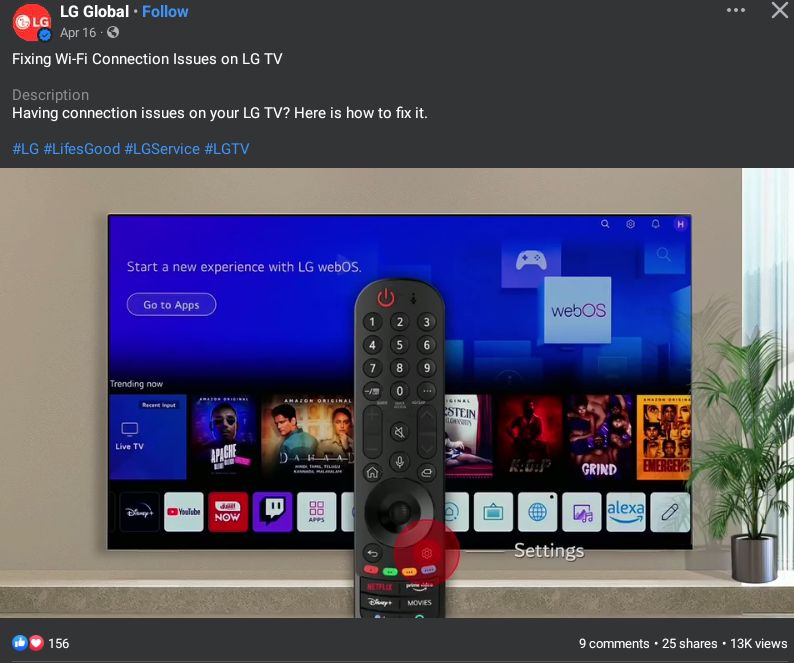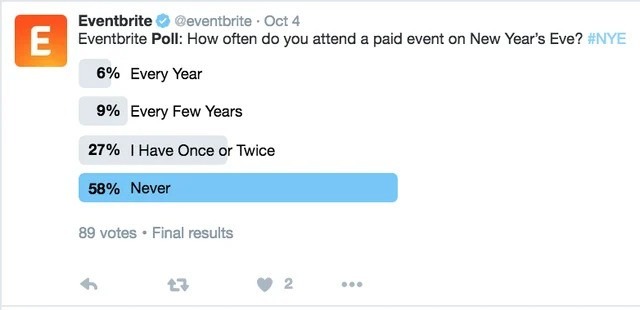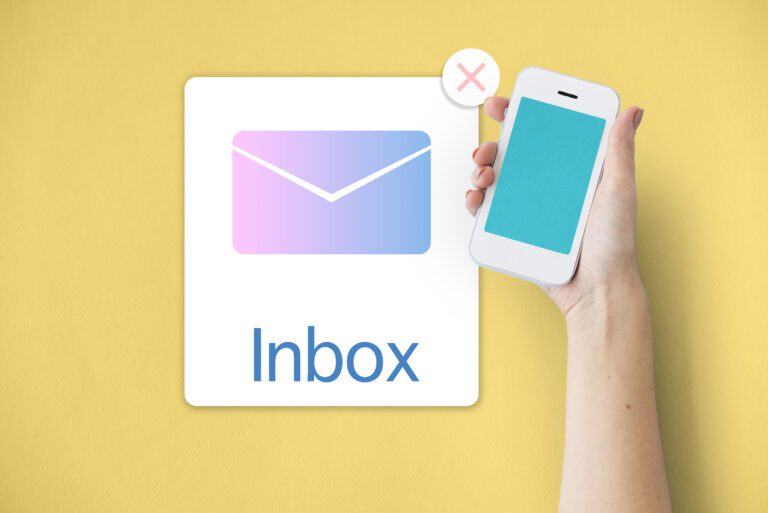How to Build an Email List From Scratch: Start-to-Finish Guide

I hope you enjoy this blog post. If you want Hello Bar to grow your leads, click here.
Author:
Ryan Bettencourt
Published
July 22, 2024

If you want to build an email list from scratch, you have a tough job ahead. It’s not impossible, though — business owners and marketers do it every day.
You just need a solid blueprint to follow, and that’s what we’re going to provide today. Check out this guide to learn how to build an email list from scratch even if you have no marketing experience.
What Is an Email List?
An email list is a database of email addresses that you have collected from people who opted in to receive your newsletter or other email promotions. The more addresses you collect, the stronger your email list becomes.
If you’re just learning how to build an email list from scratch, you’re likely unsure about where to start. That’s completely normal. When you hear about marketers who have hundreds of thousands of subscribers, the process can seem intimidating.
However, everyone starts in the same place, so there’s nothing to worry about. As long as you follow email marketing best practices, you’ll be on the road to a big list in no time.
What Is Email Marketing?
Email marketing is all about engaging your leads via promotional or educational emails. Every message you send should contain something of value to your target audience.
When asked what they wanted in their inbox, 82.4% of email subscribers mentioned special offers or discounts. Another 53% wanted news from brands. By far, however, consumers sign up for email lists because they want to save money.
They’re interested in dollars off, free shipping, percentage-off offers, and buy-one-get-one-free deals. However, many consumers and B2B customers are also interested in information.
Think about your leads who remain at the top of the sales funnel. They’re not ready to buy from you yet, so a 10 percent discount won’t carry much weight.
However, if you send those people a detailed guide to help them solve a problem or fulfill a goal, they might become warmer to the idea of making a purchase.
That’s how email marketing works: Send the right offer to the right people at the right time.
What Is a Lead? And How Do We Get Leads From Our Website?
A lead is someone who has provided you with contact information. That’s it. He or she hands over an email address, postal address, phone number, or other information so you can market to him or her.
Lead generation — the process of converting website visitors into leads — starts with your website itself. People find it via social media links, Google search, and other means, but they’re not yet leads. These prospects need a reason to convert.
By incentivizing conversion — such as with a lead magnet — you increase your chances of collecting leads from your website. People want whatever it is you’re offering, so they’re willing to give you their email addresses so you can contact them in the future.
Nearly every business has to learn how to build an email list from scratch, and almost all businesses have some way of collecting leads via their websites.
Even fast food giant McDonald’s shows you a popup when you visit its website. It invites you to — you guessed it — sign up for the company’s email list.
People who want to save $1 on a quarter pounder with cheese will be anxious to get those promotions.
We’ll talk more about how to capture leads in a minute, but for now, you need to know that you can’t build an email list unless you have some way to collect leads from website visitors.
Why Is Email Marketing the Best Online Marketing Form in Terms of ROI?
On average, marketers make $36 for every dollar they invest in email marketing. It goes up to $45 for businesses in the ecommerce, retail, and consumer goods industries. That’s huge. That’s huge.
There are a few reasons email marketing is the best online marketing form when it comes to ROI. For one thing, it’s ridiculously inexpensive.
Email marketing platforms’ fees vary based on your database size. If you’re just starting to learn how to build an email list from scratch, you’ll likely be able to sign up for a free account.
The prices go up to $1,000 per month, but businesses in that category have hundreds of thousands of subscribers. Because of the amazing ROI, the monthly spend is worth it.
Email also has great ROI because it’s a familiar medium. People are used to opening and reading emails now that we’ve been using the platform for decades.
And finally, you’ll get great ROI through effective email marketing because it’s easy to figure out what your audience wants. Survey them, ask them for feedback on social, and pay attention to their behaviors.
How to Build an Email List from Scratch: The Essentials
Believe it or not, you have an advantage if you’re just beginning to learn how to build an email list from scratch. You get to benefit from those who have gone before you.
Marketers have collected tons of data about email campaigns, which means you don’t have to do much guesswork. We always recommend testing whatever strategy you choose, but that comes after you set up your email campaign.
In the beginning, you just need a few raw materials and some basic knowledge of how email marketing works. When people start signing up, you can measure your success and make adjustments based on website visitor behavior.
The important thing to know is that email marketing depends significantly on your ability to attract people to your website. In other words, you’re taking advantage of existing traffic to open up a new marketing channel.
Sounds good, right? Follow this start-to-finish guide to learn how to build an email list from scratch starting today.
1. Get a Website
If you don’t have a website, you’ll struggle to build an email list. In fact, it might be next to impossible.
As I mentioned above, your email list depends on your traffic. The more people who visit your website, the more email addresses you can collect.
Not only do you need a website, but you need content. Great content gets ranked by the search engines and drives traffic to your site. We recommend starting a blog on your site and writing long-form articles geared toward your target audience.
That’s what we’re doing here at Hello Bar. We write long, in-depth content to help our prospects and leads better understand how marketing works. As a result, we get traffic straight from Google.
And that traffic is free.
If you haven’t already, create a website using an AI website builder or inexpensive web host like Bluehost and a WordPress installation. You can then pick a free or premium theme as your design and start blogging.
2. Get to Know and Understand Your Audience
There are certain assumptions you can make about your audience. For instance, if you run a sporting goods e-commerce store, you can safely assume that your audience is interested in fitness.
Beyond that, though, you need to dig a bit deeper.
Nearly every business has multiple buyer personas. A buyer persona is a fictionalized version of your target customer.
That’s pretty detailed, right? This buyer persona example includes pain points, gender, age, place of residence, occupation, income, and more. It also details the customer’s motivations, goals, and frustrations.
Creating a buyer persona isn’t just for fun. You’ll use each one to target that person with relevant content.
For instance, in the example above, the customer is a female who has narrow feet and struggles to find shoes that fit. You might write an article on the top 10 shoe brands for women with narrow feet. That content would attract your target customer, at which point you could make an offer to collect her email address.
3. Install Hello Bar on Your Website
This may come off as being biased, but we consider Hello Bar to be the best lead capture tool available today. It’s lightweight, easy to install, and ridiculously effective.
Hello Bar allows you to use top bars, modals, sliders, alerts, exit popups, and more to collect email addresses. When you create a Hello Bar, you can automatically push it live to your entire website or only on specific pages.
A top bar appears at the top of the website and allows people to input their email addresses right then and there. Experiment with different types of bars to figure out what works best for your audience. You can also A/B test similar bars against one another.
4. Choose an Email Marketing Service Provider – Hello Bar Simplifies This Process for You
Hello Bar makes it easy to collect email addresses and offers many email integration options. You need an email service provider so you can send out emails to your list once you begin collecting addresses.
The best email service providers allow you to automate your email marketing campaigns. You can segment your lists based on specific criteria, set up email drip campaigns, and more.
5. Start Creating Amazing Valuable Content to Attract Traffic to Your Website
We talked about content production earlier, but let’s dig into this a little deeper.
Great copywriting skills can help you attract more traffic. You need people to find your content via social shares, Google searches, and other referral sources to introduce them to your offer.
Let’s look at a potential scenario for our e-commerce sporting goods store.
The store owner creates a series of articles about training for a marathon. Each article builds on the next, providing in-depth tips and advice as well as anecdotes from the writer’s perspective.
The content is search engine optimized so it will rank well in Google. The content is designed for beginners with a specific buyer persona in mind.
After the articles are published, a consumer stumbles across them when researching her decision to train for a marathon. She reads every word and feels grateful to the author for sharing such in-depth information.
At the top of the screen is a Hello Bar.
What do you think the consumer will do?
Since the offer aligns perfectly with the buyer persona and the content, most consumers in this position will subscribe. They want that free checklist because it will further help them reach their goals — and for free.
That’s how content marketing can help you build an email list from scratch. You lure in readers who are hungry for information, then convert them on an offer they can’t refuse.
6. Create an Amazing Lead Magnet
You might have noticed something about the top bar we shared above.
See the text we called out above? That’s a lead magnet offer. It tells people that they’ll get something of value in exchange for subscribing.
Lead magnets increase opt-in rates by dangling the proverbial carrot. There are tons of options for lead magnets, whether you’re offering a free webinar, tool, e-book, cheat sheet, or something else entirely.
While consumers are used to getting emails, they often get too many of them. They don’t want to sign up for more emails unless they get something in return.
The lead magnet initiates a transaction. It says, “I’ll give you this item of value in exchange for your permission to market to you.”
Keep in mind that you need to abide by GDPR guidelines. Hello Bar allows you to do this automatically. Essentially, GDPR requires you to get permission from the consumer to send marketing emails as well as to send over the lead magnet. You also need to make your privacy policy accessible to potential subscribers so they can read over it.
7. Create an Irresistible Offer Around Your Lead Magnet to Get Leads
Your offer is the headline or copy you use to entice your audience to download your lead magnet. If you don’t present your lead magnet in an attractive enough package, people won’t bite.
Take a look at these three offers:
- Free Cheat Sheet
- Get a Free Cheat Sheet
- Snag Your Free Marathon Readiness Cheat Sheet Now
Which one is more likely to get you to subscribe?
The last one has several advantages over the first two:
- Unique verb: “Snag” is a strong verb that suggests you’re getting something of value that other people want.
- Specificity: We’ve told the reader exactly what he or she will get.
- Urgency: Including the word “now” at the end urges the reader to act quickly.
We recommend writing at least 20 offers before you decide on one to use. Play with language and other qualities to land on the right way to capture interest and incentivize conversions.
8. Create Drip Email Campaigns to Your Brand New Email List
Drip email campaigns are designed to nurture your leads through the sales funnel. They’re a string of three or more emails that arrive in your subscribers’ inboxes at regular intervals.
Why does this matter when you’re learning how to build an email list from scratch?
You want to keep your subscribers engaged and interested. They’ll open your emails more often, click through on your call-to-action phrases, and even forward your emails to their friends.
Additionally, email marketing isn’t the end of the line. An email list isn’t worth much if your subscribers never actually make a purchase.
You can use email drip campaigns to guide the subscriber toward a product or service. Start by warming them up with information and entertainment, then slowly introduce your offer.
By the end of the drip campaign, your subscribers should have all the information they need to make an educated decision. That’s when you provide some extra incentive, such as a percentage-off coupon or an offer for free shipping.
9. Keep Attracting Traffic to Your Website to Continuously Generate New Leads
Without traffic, your lead generation efforts begin to stagnate. While it’s great to have some content on your site, you also need to take things a few steps further. Let’s explore some of the best ways to attract more traffic so your email list can grow consistently.
Use Social Media to Get More Website Traffic
Social media is one of the best tools available for driving traffic back to your website. If you’re not on at least one or two social channels, you’re way behind the times.
Facebook, Instagram, Snapchat, Twitter, LinkedIn, and other platforms allow you to connect with new people and expand your audience. Consumers who would never find your website via a Google search might click on a Facebook post.
However, many marketers and business owners use social media the wrong way. They’re constantly promoting their products or services, so they get ignored even by their followers.
Follow the 80/20 rule. It means that 80 percent of your social media content should focus on providing value to your audience, such with tips, strategies, or entertainment. Use the remaining 20 percent for promotion.
How to Use Social Media Platforms to Get Leads
There are three parts of a social media post that can help you generate leads:
- Attention-grabbing headline
- Appealing image
- Enticing CTA
That’s it. If you can nail those three elements, you’ll get plenty of click-throughs from your audience.
The headline should introduce your offer in a compelling way. Hit a pain point (1), relate to your audience (2), or ask an interesting question (3). Here are examples of all three strategies:
- Get Into Shape for Summer Fun With Quick Leg Exercises (pain point)
- I Struggled With Building Leg Strength For Years. Here’s How I Conquered It (relatable)
- Do You Want Stronger Legs? (question)
The image should relate to the headline in some way. You can make it either positive or negative.
For this example, we might choose a stock image of a man or woman struggling to walk up a flight of stairs. That’s negative. Or we could choose an image of someone happily exercising. That’s positive.
Test both to see which works better for your audience.
For the CTA, focus on mimicking the headline without repeating yourself. Here are three examples related to the three headlines above:
- Grab My Free Leg Exercises Guide
- Learn My Secrets for Stronger Legs
- Find Out How to Strengthen Your Legs in 10 Minutes Per Day
Notice that each CTA focuses on showing the reader how we can provide value.
It’s becoming increasingly difficult to reach people on Facebook organically. However, if you have lots of engagement, Facebook will continue to share your content with your followers.
The image is extremely important on Facebook. Adding video is even better.
Here’s an example of how LG uses videos in its Facebook posts:

Image via Facebook
The company uses short how-to videos to attract viewers. Adopting this method can drive traffic to your website, where people will eventually sign up for your email list.
X.com
One of the social media channels that enables you to collect information from your channels is X (formerly Twitter). While you can certainly use X posts to advertise your lead magnet and send people back to your website, you can also use it to improve your digital marketing strategy.
X polls, for instance, let you ask your followers specific questions. Eventbrite created a poll on holiday events. The company could use this information to plan its holiday email marketing strategies.

Image via HubSpot
There are three words you need to know if you want to boost lead generation through Instagram: “Link in profile.”
You can’t put links directly in your Instagram posts, but you get one link in your profile. Use that link to direct people to your lead capture page.
Attention is the name of the game when it comes to building an email list from scratch. If you want to grow your email list, you need to get eyeballs on your content.
That’s where Pinterest comes in. It’s a highly visual social network that attracts millions of page views every day. If you create visual content that people will want to check out, you’ll get more of those eyeballs.
Best of all, you don’t even have to make the visuals. You can collect images from around the web on a board based on your target audience and what they want.
Include a link to your landing page in the description of the pin. That way, people can follow it if they’re interested in checking out your offer.
We love LinkedIn for B2B lead generation. It’s the ideal place to connect with decision-makers.
Include a link to your signup page in your LinkedIn profile. Additionally, use the LinkedIn publishing system to publish unique content or to share snippets of your blog articles and link to the full pieces on your website.
YouTube
We can’t get enough of YouTube. Most of my fellow consumers seem to share the sentiment.
Where do you go when you want to procrastinate or enjoy some mindless entertainment? YouTube?
Where do you go when you want to view a step-by-step video tutorial? YouTube again.
Try creating entertaining or educational video content. Use the video description to send people to your email signup page. It’s that simple.
Run Contests and Giveaways to Engage Your Social Media Followers and Get Their Emails
Contests and giveaways require you to give something away for free. However, it can also result in huge conversion rates.
Let people know that you’re hosting a giveaway on your blog via social media. When they get to your website, invite them to sign up for the giveaway with their email addresses. Just make sure to let them know that they’ll also receive promotional emails.
Not only can giveaways convert prospects on email signups, but they can also result in more sales. The people who didn’t win your product might buy it because you’ve created a desire for it.
Use Content Marketing and SEO Tactics to Get More Website Traffic
Keep creating that content. Survey your competitors to see what they’re writing about, then do it better. Write longer articles, go into more depth, and include more relevant statistics.
Maybe your competitor wrote a 700-word article on leg-strengthening exercises. Write an article on the same subject, but shoot for 2,500 words.
Make sure you’re using proper keywords, H tags, image alt text, and other SEO best practices. You want to attract as much organic search traffic as possible.
How to Use Content Marketing to Get More Leads
The principle of reciprocity is often used in content marketing. You’re giving away some of value for free, so your readers will be more likely to provide their email addresses.
Just make sure you’re aligning the offer with the content. If you’re writing about photography, don’t offer to give away your best drawing tips and strategies. It’s the wrong audience.
Find Strong Keywords to Get More Traffic Using SEO
Strong keywords help you get found more easily via organic search. Tools like Ubersuggest help you find keywords that get decent search volume and have relatively low competition.
Keep your keyword density at 1 percent or lower if possible, and use related (semantic) keywords to help Google understand what your content is about.
Paid Website Traffic
When you’re learning how to build an email list from scratch, paid traffic can give you a jumpstart. You have several options for placing ads, each of which offers a good ROI as long as you display accurate, appealing creative.
Facebook/Instagram Ads
Facebook and Instagram Ads are getting more expensive because of their demand, but they’re still worth testing. This is especially true if you already have an active presence on these platforms.
Google Adwords
Through Google AdWords, you can place ads on the search engine results pages or through Google’s network (or both). You’ll pay each time someone clicks on one of your ads.
Narrow your audience considerably with both Facebook/Instagram Ads and Google AdWords. You don’t want to pay for unqualified traffic — in other words, people who will never be interested in buying your products or services.
X.com Ads
We’ve seen a lot of success with X ads recently. They’re less competitive than Facebook and Instagram, so there’s an opportunity to get lots of visibility for less cash.
It helps that X ads look like just another part of people’s X streams. They can prove effective if you use compelling images or videos.
How to Build Your Email List: 4 Advanced Tips
If you’re ready to take your email list to the next level, let’s look at four advanced tips that can help you grow your subscriber list faster.
1. Host Webinars
Live and pre-recorded webinars have become immensely popular. It’s your chance to communicate directly to your audience and invite them to convert on an offer.
It’s an exchange of value. For 30 to 60 minutes, you provide educational content for the webinar attendees. At the end, you invite them to sign up for your email list in exchange for your lead magnet.
In many cases, marketers also offer a discount code at the end of a live webinar, but remove it from the recorded version. You can publish the recorded version on your website, use it as a lead magnet, or send it to your subscribers via email.
2. Set Up Exit Intent Popups With Hello Bar to Get More Emails
An exit popup appears on visitors’ screens when they attempt to click away. It’s great for convincing more people to sign up for your email list.
Hello Bar allows you to create an exit intent popup directly from your dashboard. Use compelling text and visuals to convince people they want your emails — and your lead magnet.
3. Segment Your Email List to Constantly Improve Your Email Campaigns
A properly segmented email list helps convert more of your subscribers on offers for products or services. You’re catering to a very specific portion of your target audience.
The easiest way to segment your list is to divide it into subscribers who are at the top, middle, and bottom of your conversion funnel. You’ll be able to send messaging that appeals to people at the right time and in the right way.
4. Work on Your Email Copywriting and Subject Line Writing to Constantly Improve Your Email Marketing Results
Building your email copywriting skills will help you become a better marketer. You’ll be able to write better email subject lines as well as body content.
Study emails you get from other companies. What do you like? What doesn’t work for you? Keep a swipe file of the tactics you want to try on your audience.
FAQs
Q1. How do I create an email list?
Here are some email list building tactics you can use:
- Choose an email marketing software.
- Place signup forms on your website popups.
- Offer incentives like a discount or free ebook.
- Leverage your social media accounts to drive traffic to your signup forms.
- Capture email addresses via signup forms.
- Segment the list of potential customers using email marketing software.
Q2. What is the simplest and most effective way to build an email list?
The simplest and most effective way to build an email list is to create lead magnets. It should be relevant and valuable to your target audience. Examples include a free ebook, guide, checklist, template, or exclusive access to content preview.
Place the offer on a signup form or a dedicated landing page. A standard opt-in form keeps things simple, requesting a name and email address. You can also share a link to the signup form on your blog post or any content you create on your social media accounts.
Q3. How long does it take to build an email list?
The time it takes to build an email list depends on several factors, such as:
- The niche or industry
- The number of email subscribers you’re expecting
- Your existing audience base or traffic
- The value of your lead magnet
- The effectiveness of your marketing efforts
Generally, if you’re starting from scratch, it takes a few months for you to collect emails, not weeks. However, you need to implement the right list building strategies to achieve this timeline.
Q4. How do I get a mass email list?
Obtaining a mass email list without proper consent isn’t recommended. It’s also illegal in some regions due to data privacy protection laws.
To gain new subscribers, you can run lead generation campaigns on social media, referral programs, influencer marketing campaigns etc.
Q5. How many emails is a good email list?
A small business should aim for at least 1,000 email subscribers. However, don’t get too caught up in the number of subscribers. A smaller, engaged list is better than a larger, unresponsive one.
Conclusion
Learning how to build an email list from scratch isn’t as hard as it looks, but you have to start somewhere. Build your website, install Hello Bar, and begin collecting email addresses.
Feel free to revisit this article often to remind yourself of the strategies available to you. You’ll get far more leads if you focus on creating successful email markting campaigns.
Your lead magnet is one of your most valuable assets. It creates value that convinces website visitors to convert.
Consider using paid ads if you want to jumpstart the process, but begin with small amounts of money. If you don’t get good ROI, return to organic and inbound marketing to grow your email list.
What are your best tips for building an email list?




